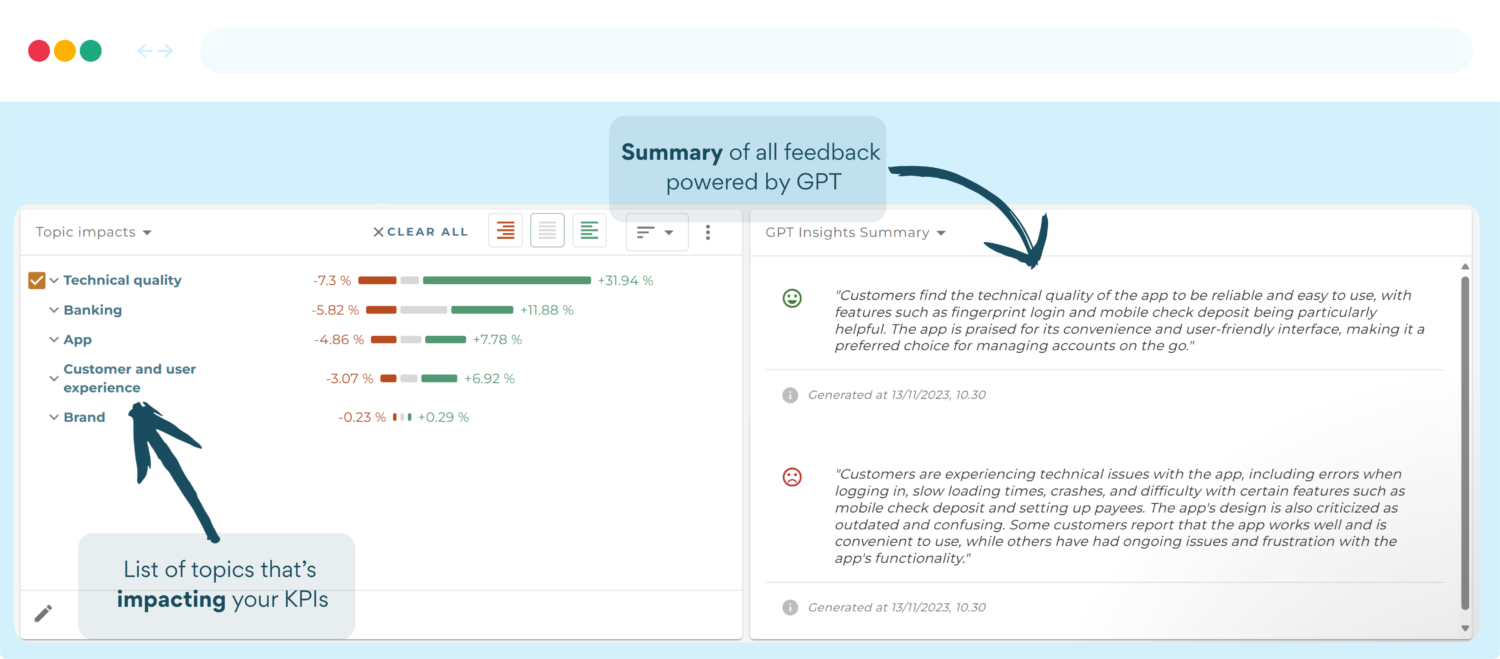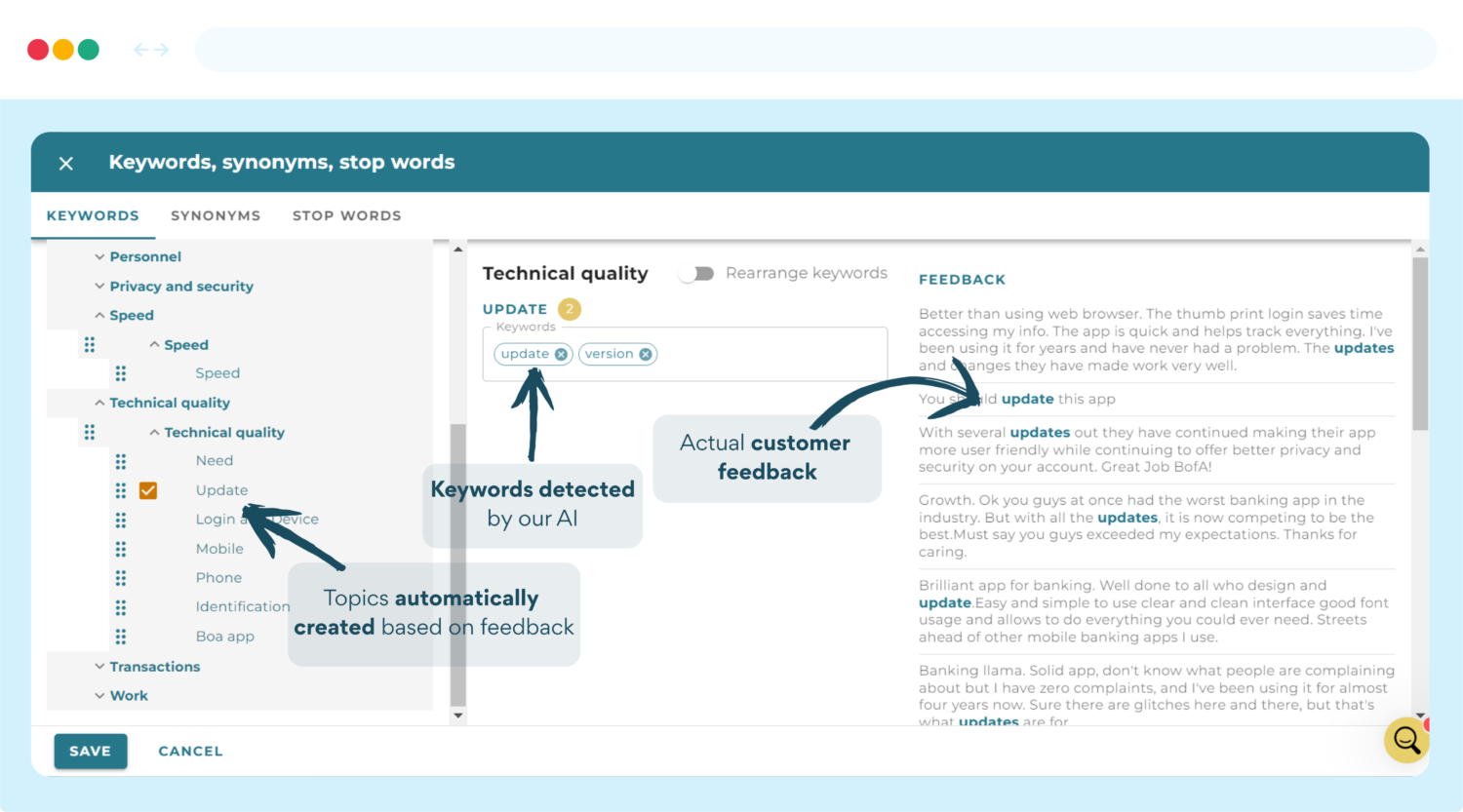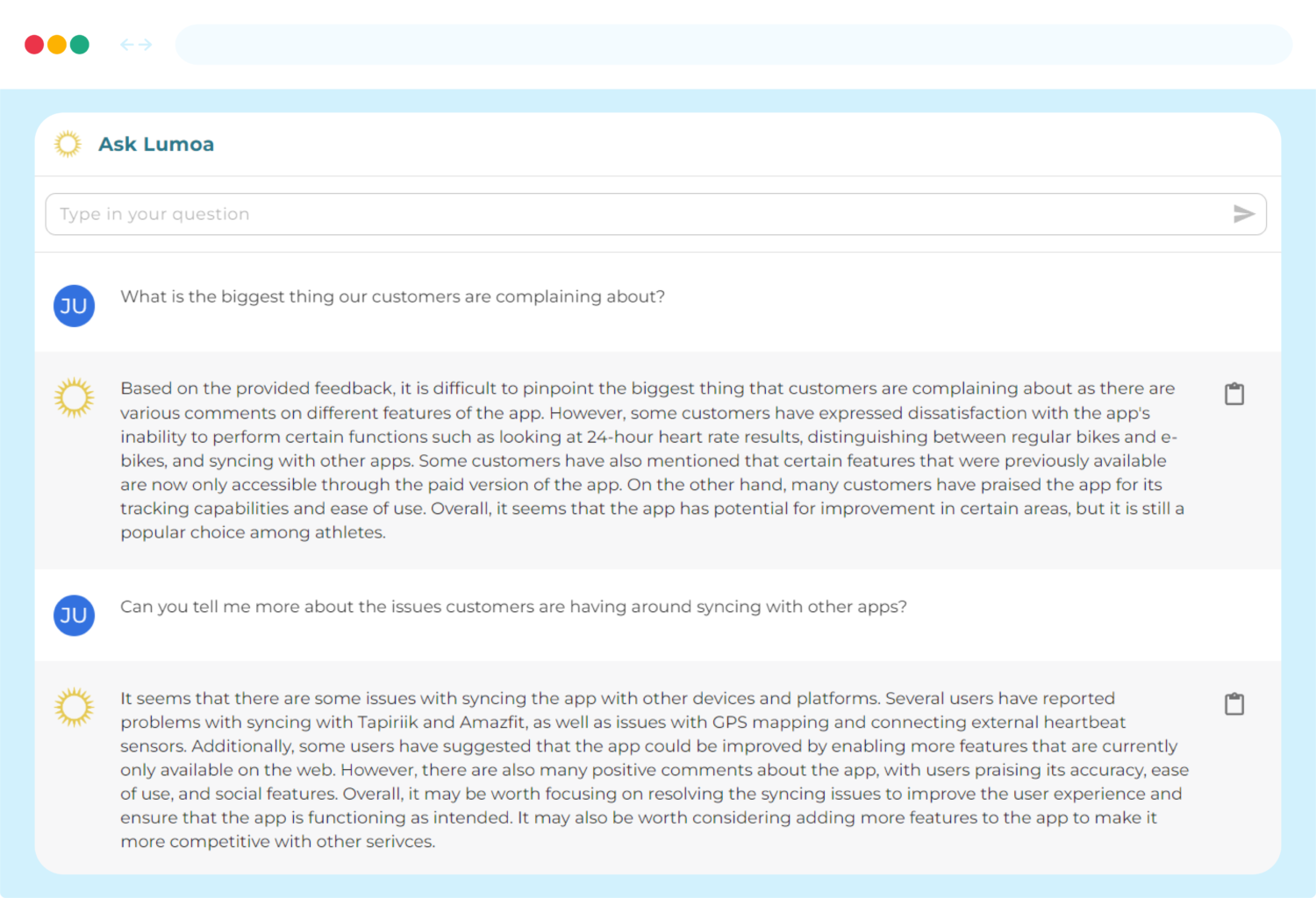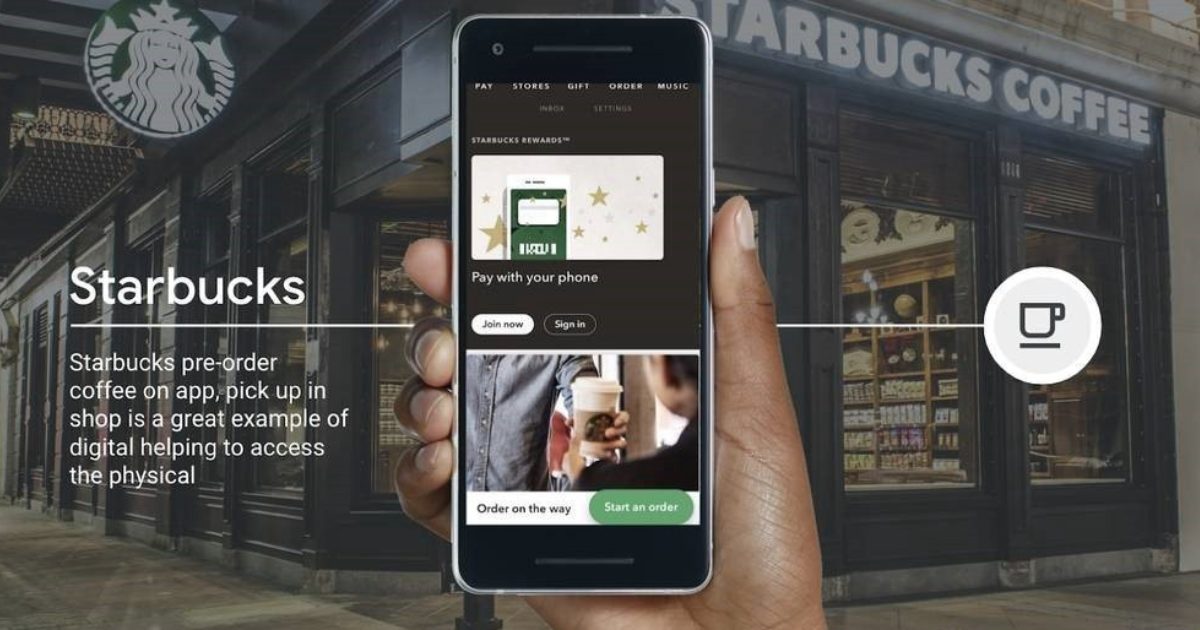What is the Role of AI in Customer Feedback Analysis?

Last updated on March 19, 2024
In many companies, even though customer experience is regularly measured, data transformation becomes challenging for many reasons. For instance, it is expensive, resource-intensive, and requires expertise. But it is no longer a challenge, thanks to modern technologies like martech tools and back-office solution software and the use of artificial intelligence (AI) in customer feedback analysis.
In this article, we will go over how AI has transformed customer feedback analysis in detail while throwing some light on the trends, challenges, and the future.
In This Article:
Enhancing customer experience via AI
A company’s ability to offer remarkable Customer Experience (CX) greatly determines the competitive advantage it has in the world of business. When it comes to increasing profitability and retaining a loyal customer base, the ability to smartly source, analyze, and use customer feedback data to enhance services and products makes all the difference.
But it is one thing to claim that a business values customer feedback and another to sift out the actionable data.
AI tools can help automate and analyze customer feedback with much precision and uniformity while saving time and resources for companies. With such tools, it is easier to analyze customer behavior patterns, needs, expectations, preferences, and pain points. AI tools can also highlight correlations between different data sets that are not visible otherwise.
Because of the use of AI in customer feedback analysis, companies do not need to shell out large sums on market research, a practice that is also very time-consuming.
The advantages of using AI in Customer Feedback Analysis
At a glance, here’s how the use of AI has transformed customer feedback analysis and customer experience-
- Efficiency: AI tools can help companies efficiently categorize and analyze customer feedback data through an automated data processing system. This reduces manual work and the long hours generally put in by the team to process large volumes of data.
- Accuracy: For processing the feedback data and making judgments based on it, AI tools help reduce human errors and oversights delivering accurate analytics.
- Consistency: While processing data with efficiency and accuracy is essential, results may vary without consistency. Inconsistencies affect results and decision-making. When automated to collect the same sets of data to study growth and behavioral changes over a certain period, the data can lead to helpful insights.
- Detailed insights: in the age of fierce competition, knowing whether the customer is happy or not is not enough. Deeper insights into their buying patterns, preferences, opinions, and thinking processes help a company improve services and predict future consumption patterns.
- Improved decision-making: AI tools used in customer feedback analysis ensure a data-driven decision-making culture which in turn helps enhance the products and services because such tools help every member of the team choose what sort of data they need to efficiently function in their role.
- Better customer experience: With the correct insights on what customers want and what they are likely to use and purchase, it has become easier to improvise products without spending a lot of time and money on market research. The result is a happy customer who is likely to buy again or return for services.
Let’s talk a bit more about how the use of AI tools transforms customer feedback analysis in the next part of this blog.

NPS Versus AI tools
Typically, NPS (Net Promoter Score) is the most widely used customer experience metric. It can provide all the necessary ingredients for actionability. With additional queries, this metric can offer some fruitful insights into what drives the satisfaction or dissatisfaction of customers. When the score is good, it generally implies that the business is thriving.
Contrarily, panic sets in when the number goes down. No one seems to know how to improve the metric. In such situations, it is difficult to pinpoint the causes and often leads to conflicts within various teams in a company.
Thankfully, the most relevant AI development technologies evaluating customer feedback rely on sentiment analysis. It is a technique that uses Natural language processing (NLP) and machine learning (ML) to scour emotions, opinions, and perspectives.
For example, it can offer predictive analysis to understand how some people with specific characteristics or demographics are likely to make a purchase, what they could buy next, or what would be the way to convert them to returning customers. Apart from using human-like language, it helps bots to learn and improvise their responses based on their actions. It also involves exploring human psychology and the thought processes of a customer or a potential buyer.
Successful businesses using AI-powered tools
Starbucks’ Predictive Analytics and machine learning tool called Deep Brew is one of the finest examples of the power of AI in customer feedback analysis and how it is transforming customer experience. It helps Starbucks to personalize their communications, marketing, loyalty programs, and even keep a tab of in-store inventory.
The Starbucks app can swiftly suggest a drink based on location, the current weather, and other spending habits. And this was just one example.
The use of AI tools in customer experience is no longer a ‘nice-to-have’ but a ‘must-have’, even for small businesses. The big brands that had jumped into it much earlier are already reaping the benefits.
Another case in point would be the popular streaming platform Netflix’s use of AI and machine learning not only to suggest movies and programs to its viewers based on their watch history, ratings, preferred genre, etc. but also to produce future content that may bring better revenues.
The possibilities have grown in many folds since the development of the generative AI chatbot developed by OpenAI. In fact, it has transformed the world of Customer experience like never before. It has become so easy to process customer feedback, identify improvement areas, and even generate new product ideas just by using interactive chat sessions.
Moreover, customer support teams can now use OpenAI’s GPT to create message prompts without having to spend time composing the response or having any programming and technical knowledge.
Gathering customer feedback with AI
- Feedback Tools like surveys and automated forms: Creating super interactive customer feedback surveys or forms has become so easy with AI that companies can use them to quickly ask their customers specific questions to steer the feedback towards a certain direction.
With such tools, they can focus on selected products or choose specific demographics for the survey. After the survey, the same tools can tell the intention and sentiments behind the feedback to help companies enhance quality.
- Chatbots for interactions and real-time feedback: Integrating chatbots into a company’s app or website can help companies quickly find solutions to their customers’ problems, answer their queries, and even get instant feedback. Chatbots are capable of being developed to provide more useful responses because they’re trained on large language models and can go through LLM fine-tuning.
This real-time interaction method not only saves time and money but ensures that the customers feel heard and important which is a major influencer for a customer’s buying decisions.
- Social media monitoring: With the smart integration of AI and social media platforms, it has become a breeze to gather information about product mentions, positive and negative chatter about the business, and future trends in markets.
Analysing VoC (Voice of Customer) from the customer feedback acquired through AI-powered surveys, feedback forms, chatbots, phone calls, and even social media further helps in understanding what is negatively affecting the customer experience and what can be done to improve it.
The challenges of using AI in customer feedback analysis
In some cases, automated response is the key to dealing with the most typical complaints and suggesting solutions to routine problems. However, it is not just about technology. Inaccuracies may occur due to intrinsic biases in feedback despite algorithms and AI bots, equipped with text classification capabilities, bringing down errors to a minimum. Some errors can even incur losses to businesses.
Human judgment is essential for strategic decisions and understanding the sentiments in full context. Therefore, the most optimal analytics solution is to merge machine learning and human intelligence. While machine learning brings in speed, cost-effectiveness, and the ability to process massive text volumes in a split second, human ingenuity is needed to interpret and make decisions. Lumoa’s analytics is built on top of this philosophy.
The platform combines machine learning and other AI technologies with human-built rules specific to each industry and is sometimes also tweaked to match the business requirements of our biggest customers.
In other words, we help you strategize how you use AI to improve your customer experience by helping feed the bots the right algorithm because it is crucial to know where to focus your efforts. The results are always relevant to the businesses we work with.
Lumoa is also the first CX platform to integrate with GPT. In a fast and secure environment, every employee in a team could ask questions relevant to their roles and get answers drawn from what customers actually say in real-time. Lumoa’s integrated GPT insights can instantly summarise different feedback while highlighting the positives and negatives.
When using a CX platform, one still needs to sift through the feedback and check the content. GPT helps you to find that answer without asking what is causing it. Lumoa helps you to strategize the use of these tools for best results.
Managing your customer experience with Lumoa
Here’s how you can manage your customer experience with Lumoa-
Get an overview of your customer journey:
Lumoa’s dashboard helps you get a quick and easy overview and manage different customer journeys, touchpoints, and data sets in real-time. We help you create cards in your dashboard that represent a specific touchpoint, location, or channel. Then, you can compare the performance between cards and analyze fixed insights related to that card. Lumoa also helps you to find performance gaps by comparing different data sets.

Know what impacts your customer experience:
Lumoa shows the trends and topics that impact your customer experience and can quantify the impact. It makes it easy for companies to identify their focus area. You can get access to data sets that show correlations between your impact drivers and only see the feedback relevant to your case. Lumoa analyzes and detects the sentiment of customer feedback regardless of the language used.

Get automated and actionable insights:
Let’s explore how Lumoa uses automatic detection of actionable insights to point out the issues that need immediate action.
- Phrase detection: Lumoa’s phrase detection tool helps find frequently used phrases in customer feedback and generates concrete ideas of improvements for your metrics based on those phrases.
- Prioritized feedback: Lumoa helps companies prioritize feedback by calculating the impact so that they can act on the most important impact drivers first.

Swiftly turn insights into action:
Focusing on actionable insights has never been easier. Lumoa helps you to do it more methodically and fast by creating events.
- Create automated events: Act on feedback in real-time by creating automated events that get triggered when you receive a certain type of feedback.
- Assign responsibility and track progress: You can take action and assign tasks to a specific team or a person depending on the importance of the metrics with Lumoa’s dashboard. Additionally, track the development of those tasks and see if the matter is resolved.
Focus on what matters more:
Monetary values can also be added to tasks to sort them based on their impact or importance. Manage and follow the development of ongoing events to ensure that the right action is initiated.
Find performance gaps:
Sort your performance by touchpoints, agents, or customer segments and swiftly uncover performance gaps.
Tap on individual feedback:
All feedback under specific topics and insights can be checked on Lumoa UI. You can also create events for single feedback, act on them automatically or manually and sort feedback in different ways such as most positive or negative first.
Ask relevant questions with Generative AI:
With the help of Generative AI, you can now ask questions and get real-time answers on your customers’ preferences, challenges, and expectations. After asking a question, one can get an overview of a long conversation over email or phone at the click of a button.

The results also throw light on the reason for those conversations, the emotions behind what is being said, and what is causing a problem. So the information shared with a support agent is no longer limited to that specific agent but can be assessed by the whole team. The feature also tells how the issue was resolved, points out the closing emotion, and offers recommendations to the agent for future conversations.
The future of AI in customer feedback analysis
The future promises even more seamless integration of AI in customer feedback analysis. As customer data becomes more valuable, the focus will shift towards data privacy and ethical practices. Customer consent will play a vital role in the process as well. A few less explored or untapped areas are Neurofeedback analysis, Augmented Reality feedback analysis, and combining AI with bioinformatics.
The possibilities are limitless. The journey towards deep leveraging AI for a better understanding of customer feedback is changing the dynamics of the business world in unprecedented ways.
Conclusion
As we’ve explored, AI in customer feedback analysis is not just a trend; it’s a critical tool for modern businesses. With this technology, which we’ve focused on extensively, you can get an accurate picture of customers’ opinions.
However, it’s important to remember that AI in customer feedback analysis works best when paired with human insight. Combining these two ensures more accurate, context-aware results.
Lumoa’s approach to AI in customer feedback analysis demonstrates this balance. By integrating advanced GPT technology, Lumoa enhances businesses’ interaction with and understanding of customer feedback.
Truly, AI in customer feedback analysis is key for those who seek a deeper understanding of their customers. And Lumoa is at the forefront of that technology, providing tools essential for businesses to stay connected and responsive to their customer base. As AI in customer feedback analysis continues to evolve, it promises to bring even greater insights and opportunities for businesses to thrive.
